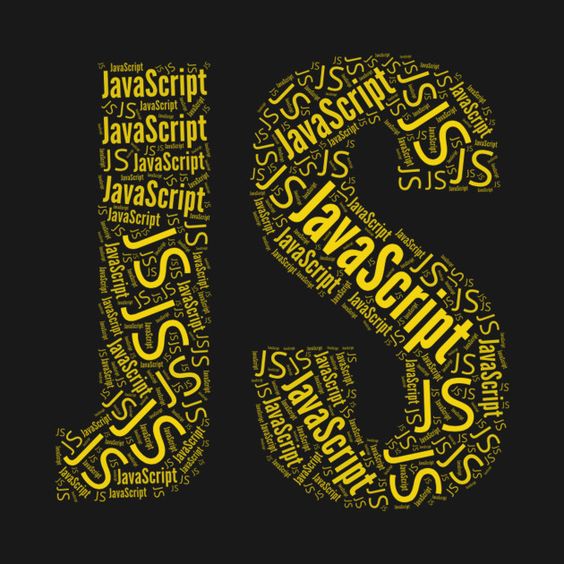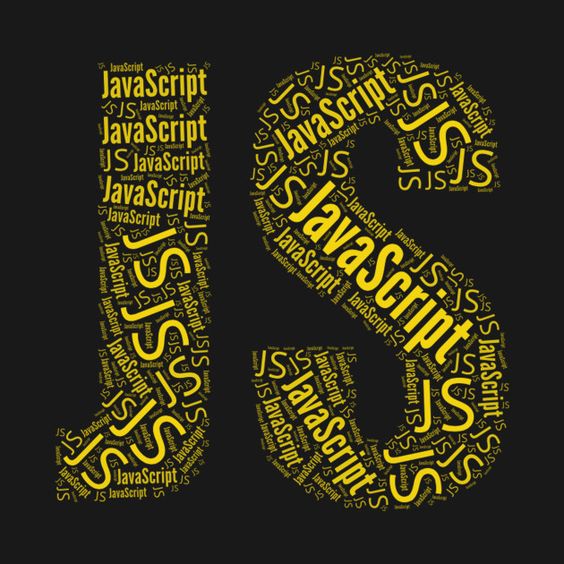JavaScript - The Language that Built the World
 Ogunsakin Tope Emmanuel
Ogunsakin Tope Emmanuel 

Once upon a time in the vast digital landscape, there was a language that revolutionized the way we experience the web. Its name was JavaScript. This remarkable language had the power to breathe life into static web pages, making them dynamic, interactive, and captivating.
JavaScript's story began in the mid-1990s when a visionary named Brendan Eich created it at Netscape. Originally known as LiveScript, JavaScript was designed as a simple scripting language for web browsers. Its purpose was to add interactivity and enhance the user experience. Little did anyone know that this language would soon become the backbone of the modern web.
JavaScript has emerged as a powerful and versatile programming language that has revolutionized the way we interact with the digital world. With its widespread adoption and continuous evolution, JavaScript has become the backbone of the modern web. Beyond web development, JavaScript's versatility extends to a wide range of tech fields, making it an essential language across various domains. In this article, we will explore how JavaScript plays a significant role in shaping and empowering several key tech fields.
From dynamic content and user interfaces to data manipulation and server-side development, JavaScript has permeated every corner of the web, making it an indispensable language for developers worldwide.
Background
The Journey of JavaScript
JavaScript, originally known as LiveScript, was created by Brendan Eich at Netscape in 1995 as a means to bring interactivity to web pages.
At the time, web development primarily relied on static HTML, and JavaScript emerged as a scripting language that could be executed directly in the user's web browser.
As the web evolved and user expectations grew, JavaScript expanded its capabilities, evolving from a simple scripting language to a robust programming language capable of handling complex tasks.
JavaScript - The Language That Built the World
JavaScript has not only adapted to the changing needs of web development but has also played a pivotal role in shaping the modern web as we know it today.
Its profound impact can be seen in the way it revolutionized front-end development, enabled server-side programming, and facilitated the creation of interactive and dynamic web experiences.
JavaScript's status as a foundational language is a testament to its ubiquity and the immense influence it has had on the digital landscape.
With this context in mind, let us explore the transformative power of JavaScript and how it has shaped the development of the modern web.
The Rise of JavaScript
In its early days, JavaScript emerged as a lightweight scripting language primarily designed for web browsers.
It was developed to enable web developers to add interactivity and dynamic functionality to their web pages.
JavaScript allowed for tasks such as form validation, image slideshows, and simple animations, enhancing the user experience and making websites more engaging.

Advancements and Standardization: Evolution of JavaScript and ECMAScript Standards
As web development grew in complexity, so did JavaScript. It underwent significant advancements and improvements over the years.
The standardization of JavaScript through ECMAScript ensured consistency and compatibility across different web browsers.
ECMAScript, commonly referred to as ES, introduced new features, syntax enhancements, and improved performance, driving the evolution of the language.
Major versions of ECMAScript, such as ES5, ES6 (ES2015), ES7, and so on, expanded JavaScript's capabilities and provided developers with powerful tools for building robust web applications.
Client-Side Dominance: Empowering Dynamic Web Content and Web Applications
JavaScript's true breakthrough came with its ability to manipulate the Document Object Model (DOM) dynamically.
This capability allowed developers to create interactive web content that could respond to user actions in real time.
JavaScript's event-driven nature and integration with HTML and CSS made it an essential tool for developing highly interactive and responsive websites.
With JavaScript's support for AJAX (Asynchronous JavaScript and XML) and JSON (JavaScript Object Notation), it became possible to build web applications that could retrieve and update data from servers without refreshing the entire page.
These advancements played a significant role in the rise of web applications, as JavaScript empowered developers to create rich, interactive experiences that rivaled traditional desktop applications.
Fields Shaped By Javascript

JavaScript plays a significant role in shaping and empowering several key tech fields.
1. Web Development:
JavaScript's inception into web development marked a paradigm shift, enabling developers to create dynamic and interactive web pages. It empowers front-end development, allowing for client-side scripting and creating engaging user interfaces. JavaScript frameworks like React, Angular, and Vue.js have further expanded the possibilities, enabling the creation of complex and responsive web applications. With Node.js, JavaScript is also used on the server side, making it a full-stack language for web development.
2. Mobile App Development:
JavaScript has also found its way into mobile app development, offering cross-platform development frameworks like React Native and Ionic. These frameworks allow developers to build native mobile applications using JavaScript, targeting both iOS and Android platforms. By leveraging JavaScript, developers can save time and effort by writing code once and deploying it across multiple platforms, resulting in faster development cycles and cost-effective solutions.
3. Desktop Applications:
JavaScript is not limited to web and mobile development alone; it has also made its mark in the domain of desktop applications. Electron, an open-source framework, uses JavaScript, HTML, and CSS to build cross-platform desktop applications. This has opened up new avenues for developers to create desktop apps using familiar web technologies, thereby expanding JavaScript's reach beyond the browser.
4. Artificial Intelligence and Machine Learning:
JavaScript is increasingly being used in the field of artificial intelligence (AI) and machine learning (ML). Libraries such as TensorFlow.js and Brain.js allow developers to implement AI and ML algorithms directly in the browser, enabling tasks such as image recognition, natural language processing, and predictive analytics. JavaScript's ubiquity makes it accessible to a broader range of developers, democratizing the field of AI and ML.
5. Internet of Things (IoT):
JavaScript's lightweight and flexible nature make it an ideal language for IoT applications. With the rise of IoT devices and smart home technologies, JavaScript-based frameworks like Johnny-Five and Cylon.js simplify the process of programming and controlling IoT devices. JavaScript's versatility enables developers to bridge the gap between software and hardware, facilitating the seamless integration of connected devices.
6. Data Visualization:
Data visualization is a crucial aspect of analyzing and presenting complex data sets. JavaScript libraries such as D3.js (Data-Driven Documents) have revolutionized the field of data visualization. With D3.js, developers can create interactive and dynamic charts, graphs, and maps that make it easier for users to understand and interpret data. JavaScript's ability to manipulate the Document Object Model (DOM) and handle events in real-time enables the creation of visually appealing and interactive data visualizations.

7. Game Development:
JavaScript has become a popular choice for building browser-based games. HTML5, coupled with JavaScript, provides a powerful platform for game development without the need for plugins or additional software. Libraries like Phaser and Babylon.js offer game development frameworks and engines that leverage JavaScript to create engaging and immersive gaming experiences. JavaScript's versatility and widespread browser support have made it a preferred language for both casual and advanced game development.
8. Serverless Computing:
Serverless architecture has gained significant traction in recent years due to its scalability and cost-efficiency. JavaScript, with the help of serverless computing platforms like AWS Lambda and Azure Functions, allows developers to build and deploy serverless applications. By leveraging JavaScript in serverless environments, developers can write lightweight and scalable functions to handle specific tasks, reducing infrastructure management and allowing for rapid development and deployment.
9. Chatbots and Virtual Assistants:
JavaScript has also found its place in the world of conversational interfaces, such as chatbots and virtual assistants. With frameworks like Botpress and Dialogflow, developers can build intelligent chatbots that can understand and respond to user queries. JavaScript's asynchronous nature and event-driven programming model make it well-suited for handling real-time user interactions and integrating with various messaging platforms.
10. Cross-Platform Desktop Applications:
JavaScript, along with frameworks like Electron and NW.js (formerly known as Node-Webkit), has opened up possibilities for cross-platform desktop application development. These frameworks enable developers to create desktop applications using web technologies, including JavaScript, HTML, and CSS, while providing access to native APIs and system-level functionalities. This approach allows for rapid development and deployment of desktop applications across different operating systems.

11. Augmented Reality (AR) and Virtual Reality (VR):
JavaScript has made significant inroads into the world of augmented reality and virtual reality development. Libraries such as A-Frame and AR.js provide frameworks for creating web-based AR and VR experiences using JavaScript. These frameworks leverage the power of WebGL, allowing developers to build immersive 3D environments and interactive experiences that can be accessed through web browsers, eliminating the need for specialized software or installations.
12. Blockchain and Cryptocurrency:
JavaScript has also found its way into the realm of blockchain technology and cryptocurrency development. Libraries like web3.js and ethers.js enable developers to interact with blockchain networks, create decentralized applications (DApps), and build smart contracts using JavaScript. With the rise of cryptocurrencies and blockchain-based platforms, JavaScript provides an accessible and widely-used language for developing decentralized applications and implementing blockchain-related functionalities.
13. Automation and Scripting:
JavaScript's versatility extends beyond traditional development fields. It can also be used for automation and scripting tasks. Automation tools like Puppeteer leverage JavaScript to automate web browser interactions, allowing developers to perform tasks such as web scraping, testing, and UI automation. JavaScript's scripting capabilities enable the creation of custom scripts and extensions for various software applications, enhancing productivity and streamlining repetitive tasks.
14. Internet Marketing and Analytics:
JavaScript plays a vital role in internet marketing and analytics. Tracking and analytics tools like Google Analytics heavily rely on JavaScript to collect and analyze user behavior data on websites. JavaScript also powers various marketing technologies, including ad platforms, A/B testing tools, and customer engagement platforms. JavaScript's ability to track user interactions, handle events, and manipulate the DOM makes it an essential language for optimizing marketing strategies and understanding user behavior.
15. Cloud Computing and Serverless Architecture:
JavaScript's compatibility with cloud computing platforms and serverless architecture is another significant factor contributing to its widespread adoption. Cloud providers like AWS (Amazon Web Services) offer serverless computing environments such as AWS Lambda, where developers can write JavaScript code to run functions in a scalable and managed manner. JavaScript's integration with cloud services and serverless computing enables developers to build highly scalable and cost-effective applications that can handle varying workloads efficiently.
16. Data Science and Visualization:
JavaScript is increasingly being used in the field of data science and visualization. Libraries such as Chart.js and Plotly.js provide powerful tools for creating interactive charts and graphs that aid in data analysis and visualization. JavaScript's ability to handle large datasets and manipulate visual elements in real time makes it a valuable language for data scientists and analysts. Additionally, frameworks like TensorFlow.js bring machine learning capabilities to JavaScript, allowing for data analysis and predictive modeling within the browser.
17. Content Management Systems (CMS):
JavaScript plays a significant role in the development of content management systems (CMS) and website builders. CMS platforms like WordPress utilize JavaScript extensively for front-end functionality, dynamic content, and interactive user experiences. JavaScript frameworks like React and Vue.js are commonly used to build custom themes and plugins for CMS platforms, providing flexibility and customization options for website owners and developers.
18. E-commerce:
JavaScript powers numerous aspects of e-commerce websites, enhancing the user experience and enabling dynamic functionalities. From shopping carts and product filtering to real-time inventory updates and payment processing, JavaScript ensures smooth and interactive e-commerce experiences. JavaScript frameworks like Angular and React enable the development of robust and scalable e-commerce platforms, catering to the needs of businesses of all sizes.
19. Cybersecurity:
JavaScript also plays a role in the field of cybersecurity, both on the defensive and offensive sides. Security analysts use JavaScript to develop tools and scripts for vulnerability scanning, penetration testing, and security monitoring. On the defensive side, JavaScript is used to implement client-side security measures such as input validation, authentication, and encryption. However, it's worth noting that JavaScript can also be exploited by malicious actors, and proper security practices should be followed to mitigate risks.
JavaScript has proven itself to be an indispensable language that has profoundly impacted the world of technology. Its versatility, adaptability, and wide-ranging applications have cemented its position as a fundamental tool for developers across numerous fields. From web development and mobile apps to AI, IoT, and beyond, JavaScript has played a vital role in shaping the digital landscape we inhabit today.

With JavaScript, developers can create dynamic and interactive websites, build cross-platform applications, harness the power of machine learning and data science, control IoT devices, visualize complex data, and so much more. Its widespread adoption and continuous evolution have fostered a thriving ecosystem of libraries, frameworks, and tools that further enhance its capabilities.
JavaScript has truly built the world we live in, enabling technological advancements and transforming industries. Its impact extends far beyond the realm of programming, influencing the way we communicate, conduct business, and interact with digital systems.
As technology continues to evolve, JavaScript's importance will only grow. Its accessibility, community support, and versatility make it an ideal language for both aspiring developers and seasoned professionals. Whether you're creating a website, developing a mobile app, or exploring the realms of AI and IoT, JavaScript remains an invaluable tool that empowers us to shape the future.
In a world driven by technology, JavaScript stands as a testament to the power of a programming language that can build bridges between various domains and unlock endless possibilities. As we forge ahead into an increasingly digital era, JavaScript will undoubtedly remain an integral part of the technological fabric that propels our world forward.
So we can say that JAVASCRIPT IS ONE OF THE LANGUAGES THAT BUILT THE WORLD.
Subscribe to my newsletter
Read articles from Ogunsakin Tope Emmanuel directly inside your inbox. Subscribe to the newsletter, and don't miss out.
Written by
